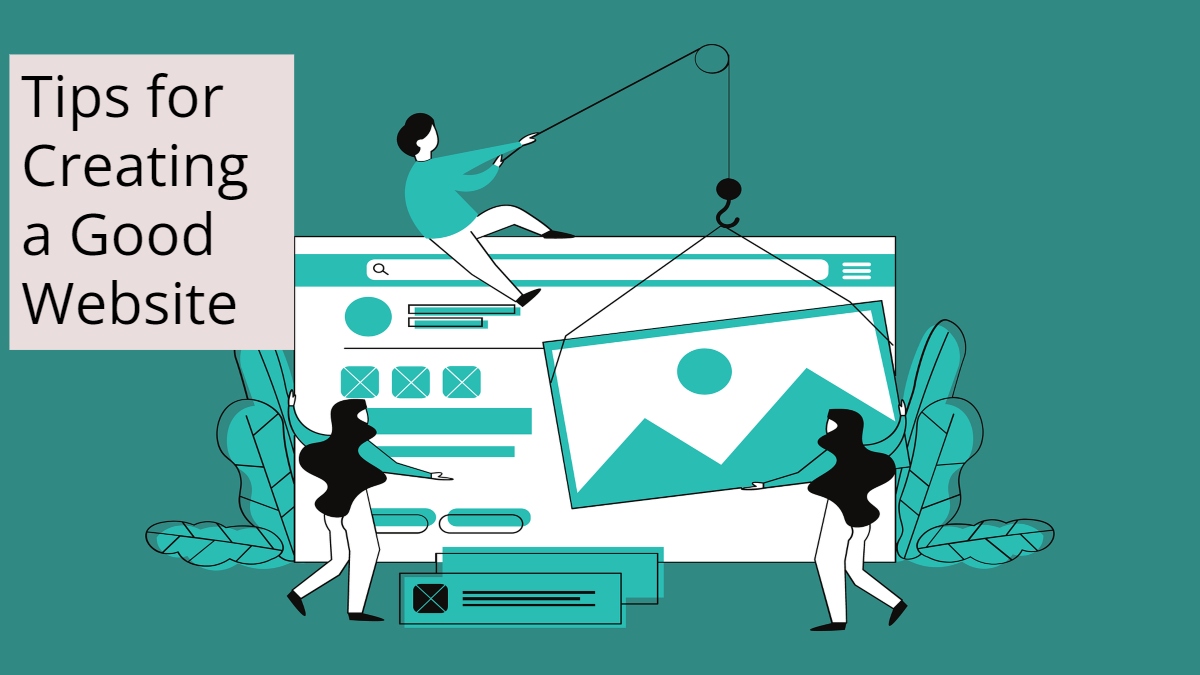Finding a balance between creativity and functionality in web design can be difficult, much like walking on a tightrope – any misstep could lead to an impractical website that fails to meet user needs.
The good news is, that there’s still room for creative expression even within the confines of web conventions. Here are a few ways you can incorporate it into your designs.
Visual Elements
Creativity in web design goes far beyond artistic expression; it’s about crafting an unforgettable user experience through captivating graphics, interactive elements, or innovative layouts that engage and delight users of your website. Creativity plays an essential part in creating successful sites that engage and enthrall visitors to them.
First impressions count and should happen instantly – in seconds (or milliseconds). According to studies, most visitors spend no longer than 15 seconds actively browsing a page before leaving; during that short amount of time, you must capture their attention with captivating visuals and an attractive message.
Color can be an extremely effective visual element to draw in visitors to your brand or product, informing them about it, and drawing their eye toward specific parts of your website or page. New Breed has led an excellent web design project known as Damotech that utilizes creative use of color on its homepage to highlight specific categories.
Typography is another key visual element. Typography refers to the arrangement and style of text on a website, with creative font usage adding character while complementing the overall aesthetic and increasing readability. Damotech uses high-quality photography on its site to convey brand personality where functionality alone cannot.
Movement is another essential visual element. Movement refers to how your website’s elements are arranged to create visual flow and avoid overcrowding a web page with too many elements; too many components will result in visual overwhelm; The proximity principle can help viewers perceive them as belonging together and create visual harmony.
At its core, balancing creativity with functionality in web design requires making sure your design serves a clear purpose and follows a consistent structure. Doing this can help prevent you from compromising creative work in favor of functionality – creating something that both fulfills functional requirements as well as exceeds visual impact expectations.
Interactive Elements
Interactive elements in your web design can help you meet functional requirements while offering visitors a truly enjoyable experience. For instance, dropdown menus that open when visitors click or hover over an item can create this effect while sliders enable visitors to explore your site with greater ease.
Attracting visitors and engaging them can be done through innovative layouts that break traditional design norms, such as using unconventional layouts that challenge conventional norms such as asymmetrical designs and grid arrangements to give your website an exciting, captivating appearance that makes your business stand out in its industry.
Design elements should also help visitors easily comprehend your site. For instance, using clear and concise copy is important in reducing ambiguity while white space helps establish visual hierarchy and make information clear. You should also implement rules regarding screen layout relationships and navigational elements and ensure consistency across devices – this way visitors won’t get lost when browsing!
Another element to keep in mind when building your website is how fast it loads. No one, particularly today’s fast-paced generation, enjoys visiting websites that take an excessive amount of time to load – studies show that visitors tend to abandon a site if its loading time exceeds three seconds.
Finding a balance between creativity and functionality in web design is no simple task, but adhering to tried-and-tested UX principles can help ensure that you create user-friendly websites that won’t jeopardize your business.
Whilst you should aim to create an eye-catching design for your website, its functionality and utility will ultimately determine its success. If it can’t meet visitors’ expectations or needs, no matter how beautiful it may look.
Content
Content on websites has become an essential factor in driving visitor traffic, conversion, and retention. Without sufficient and useful content, websites are likely to suffer low bounce rates and poor search engine optimization (SEO), underscoring the significance of including quality original material in web design.
Websites must fulfill their functional requirements first and foremost, but creativity can enhance visitor experiences. To this end, we advise starting the design process with a content workshop designed to foster creativity and problem-solving; this provides an effective means for brainstorming ideas and identifying obstacles that might need creative solutions to address them.
Consider, for instance, a company offering roofing installation and repair services. Their website would need to include key information about themselves and their capabilities – which could include text and visual elements – but also provide customers with an enjoyable browsing experience across desktop, tablet, and mobile devices. One way of accomplishing this goal would be through responsive design which ensures users enjoy a consistent user journey across devices such as desktops, smartphones, and tablets.
The Damotech website by New Breed stands as an exceptional example of an effective balance between creativity and functionality. While the website is user-friendly and intuitive, it also utilizes custom photography to emphasize brand personality. As a result, this unique and memorable website stands out among competitors.
The Body Shop stands as another example of an e-commerce retailer that successfully balances creativity with functionality. Their site provides users with videos and product descriptions tailored specifically to them while also having a clear call-to-action that directs users directly to their storefront.
Companies looking to maximize the effectiveness of their web designs must ensure that the content created aligns with their brand image and tone, increasing customer engagement while strengthening brand loyalty. Furthermore, making scannable text using short sentences with high contrast between text colors and background colors will allow customers to engage more readily with what’s on the page.
Navigation on websites must meet functional requirements to offer visitors an enjoyable user experience. If visitors cannot locate what they’re searching for quickly, they will leave quickly – the key lies in designing websites with an accessible navigation system and an easily understandable structure across pages – especially those using search or browse interfaces. Wayfinding elements, such as “you are here” orientation cues and landmarks of the information space help reinforce a sense of directionality for navigation through information spaces.
Landmarks in real-world space can serve to guide people toward new locations or distances, but the web presents unique navigation challenges due to its virtual nature. Therefore, web navigation necessitates using specific landmarks and wayfinding elements which enable users to move between pages without losing their way within the site.
These navigational elements consist of the overall visual appearance of a page as well as the naming, positioning, styling, and labeling of core page components and interface features. Furthermore, this element creates a hierarchy for page header links and navigational hints that tell users where they are on the site – providing users with an immediate sense of direction and speeding their journey quickly to what they’re searching for on your site.
An effective way of thinking about website navigation systems is as a series of map keys. Each page should contain one that identifies its place to other pages on the site and other map keys on its home page and elsewhere on each page and consistently displayed. They should appear either as links or menu bars and be appropriately sized to fit a typical browser window or mobile screen size.
Other navigational aids include breadcrumb trails, which provide links that indicate where a user has come from and is going next. Breadcrumb trails can be especially helpful for search interfaces as they cut through traditional hierarchies of websites to quickly get users where they need to be within them – like pages that change color when users navigate them! They may even include additional graphics or methods like tabs that change color to show where on the site users currently are located.
Webzzen
Webzzen, web design company in coimbatore, embodies the essence of “Where Creativity Meets Functionality in Web Design.” As a dynamic web design company, Webzzen thrives on seamlessly blending artistic innovation with functional excellence. Their team of skilled designers and developers collaborates to produce websites that not only captivate with creative flair but also deliver optimal user experiences.
From intuitive navigation to visually striking interfaces, every project undertaken by Webzzen showcases the harmonious convergence of aesthetics and functionality. Their commitment to staying abreast of the latest design trends and technologies ensures that clients receive cutting-edge solutions tailored to their unique needs.
Webzzen’s portfolio speaks volumes about their ability to transform ideas into digital masterpieces, making them a sought-after name in Coimbatore’s web design landscape, where their passion for creativity and functionality resonates in every pixel.



